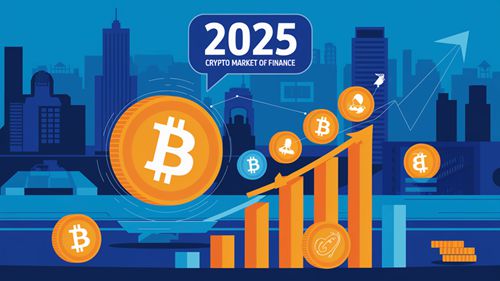INDA ETF: A Case for Long-Term Investment in India’s Market
iShares MSCI India ETF (INDA) presents a compelling case for investors considering exposure to the Indian equity market. This report aims to provide a comprehensive analysis of INDA, synthesizing historical performance data, expert opinions, and recent market developments. The central question addressed is whether investors should maintain a long position in INDA, considering the current economic and political landscape in India.
Historical Performance and Risk Characteristics
Performance Metrics
The iShares MSCI India ETF (INDA) has demonstrated a varied performance over the years. According to Lazy Portfolio ETF, the annualized rolling returns for INDA over the past five years have ranged between -4.7% and 35.8%. This wide range indicates significant volatility, which is further corroborated by the ETF’s historical drawdowns. The maximum drawdown period for INDA was from May 2018 to December 2018, where it lost 29.6% of its value. Additionally, the ETF experienced a maximum drawdown of 45.06% on March 23, 2020, during the COVID-19 pandemic, taking 172 trading sessions to recover.
Volatility and Correlation
INDA’s volatility, as reported by Portfolios Lab, stands at 2.42%, indicating moderate price fluctuations. The ETF’s correlation with other assets ranges from -1 to +1, suggesting that its returns can move in the same or opposite direction as other assets, depending on market conditions. This characteristic can be beneficial for portfolio diversification.
Monthly Returns
The distribution of monthly returns shows that INDA had 60% positive months and 40% negative months over the past ten years, with an average monthly return of 0.8%. January typically sees the highest average return (2.1%), while August has the lowest (-0.7%). This seasonality can be a consideration for timing investments.
Recent Market Developments
Political Landscape
The recent general election in India has significantly impacted INDA’s performance. According to Stock Analysis, the ETF experienced substantial volatility due to the election results. On May 19, 2024, following exit polls indicating a third-term victory for Prime Minister Narendra Modi, the ETF surged by over 4%. However, on May 23, when official vote counting showed a narrower-than-expected win for Modi, the ETF dropped by over 6%, marking its largest one-day loss in four years. This volatility underscores the sensitivity of INDA to political developments in India.
Economic Indicators
Recent economic indicators suggest a mixed outlook for India’s economy. As reported by CNBC, the ETF has seen a year-to-date (YTD) change of 16.47% and a one-year change of 30.39% as of July 9, 2024. These figures indicate strong recent performance, driven by solid corporate fundamentals and foreign investor-led inflows. However, there are concerns about inflation and potential policy changes that could impact future performance.
Expert Opinions and Market Sentiment
Positive Outlook
JP Research, as cited by Seeking Alpha, maintains a positive outlook on INDA, citing the upcoming budget as a potential catalyst for further gains. The budget could confirm policy continuity and introduce consumption-boosting measures, unlocking more near-term upside. Additionally, Arjun Jayaraman from Causeway Capital Management highlights India’s longer-term prospects, recommending INDA for exposure to large-cap stocks.
Cautionary Notes
Despite the positive outlook, experts caution against expecting substantial short-term gains. Jayaraman predicts total returns for the BSE Sensex index to fall within a range of low to high single digits to lower double digits. This tempered expectation suggests that while the long-term prospects are favorable, investors should be prepared for potential short-term volatility.
Comparative Analysis
INDA vs. INDY
A comparison between INDA and the iShares India 50 ETF (INDY) reveals some key differences. According to Portfolios Lab, INDA has a higher expense ratio (0.69%) compared to INDY (0.15%). However, INDA has outperformed INDY in terms of total returns over the past decade. INDA also has higher volatility (2.42%) than INDY (2.24%), indicating greater price fluctuations. Investors should consider their risk tolerance and investment goals when choosing between these two ETFs.
INDA vs. INDL
The Direxion Daily India Bull 3X Shares (INDL) offers a more leveraged exposure to the Indian market. INDL has a higher volatility (5.04%) and a more significant maximum drawdown (-95.67%) compared to INDA. While INDL may offer higher potential returns, it also comes with increased risk, making INDA a more suitable option for risk-averse investors.
Key Insights and Future Outlook
Market Trends
Several trends and market forces are likely to influence INDA’s future performance. The ongoing economic reforms in India, coupled with strong corporate fundamentals, provide a solid foundation for growth. Additionally, foreign investor interest remains robust, supporting the ETF’s performance. However, political uncertainties and potential policy changes could introduce volatility.
Implications for Investors
For investors, the key takeaway is to maintain a balanced perspective. While the long-term prospects for INDA are favorable, driven by India’s economic growth and corporate performance, short-term volatility should be expected. Investors with a higher risk tolerance may find INDA appealing for its potential upside, while those seeking stability might consider diversifying their exposure.
Forward-Looking Statement
Looking ahead, INDA’s performance will likely be influenced by a combination of economic policies, corporate earnings, and global market conditions. Investors should stay informed about developments in India’s political and economic landscape and be prepared to adjust their positions as needed. Overall, maintaining a long position in INDA appears justified, given the positive long-term outlook and the potential for continued growth in the Indian equity market.
Conclusion
In conclusion, the iShares MSCI India ETF (INDA) offers a compelling investment opportunity for those seeking exposure to the Indian equity market. Despite recent volatility and political uncertainties, the long-term prospects remain favorable. Investors should keep calm and stay long on INDA, while staying vigilant about market developments and potential risks. By balancing short-term caution with long-term optimism, investors can navigate the complexities of the Indian market and capitalize on its growth potential.


